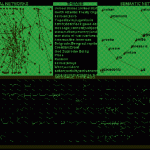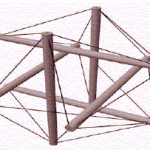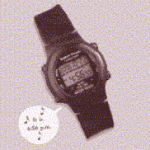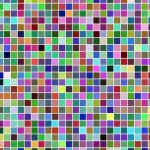2005
The subject of conversation enters the conversation that is First Person, here in section seven.
Warren Sack uses The Conversation Map, a "graphical interface" that analyzes newsgroups and listservs, to analyze the possibilities of discourse analysis itself.
"Collaboration shifts": Victoria Vesna investigates the digital/physical limn, the compression of spacetime, and the condition of tensegrity in projects such as n0time and Datamining Bodies.
The subtitle - "Using Voice Chips and Speech Recognition Chips to Explore Structures of Participation in Sociotechnical Scripts" - tells the story, partly. But there's more in store.
Cris Mazza on hijacking the terms of postfeminism.
A Wallace Stevens conference review from poet and critic Ravi Shankar.
David Nobes on the World Summit on the Information Society and the failure of some of its visionaries to see beyond tame and regimented applications of the Internet.
From origin stories to progressive science fiction, Lisa Yaszek studies the changing face of feminsim.
geniwate writes along with sexless software agents and dismantles the gender politics of the programming man and his machine.
Carolyn Guertin surveys the politics of Hacktivist women.
Is there such a thing as womens' writng? Or, for that matter, womens' media? Elisabeth Joyce moves through the work of Annie Abrahams and writes against restrictive domestications of electronic media.
"Rather than gathering in the South Ballroom for the plenary, we read into gardens, playrooms, cars, stores, home offices, and kitchen tables. These sites are not homey, though, in any Palmolive way." Bill Stobb reviews a collection of writers who consider the complexities of artmaking and motherhood.
Elyce Helford frames Tank Girl as a portrait of the postfeminist woman: hyper-individualist and hyper-sexual - a woman who is quite comfortable in popular cinema but not so much so in reality.
2004
Diana Lobb responds to Katherine Hayles and ponders the ambiguities of dialogue.
William Major measures academic "ecocriticism" against the practical "agrarianism" of Wendell Berry.
Stephen Schryer reviews Mark Taylor and casts a critical eye on the unconditional celebration of complexity.
Diana Lobb tackles the legacy of positivism and the politics of chaotics.
For all the talk of cyber-difference, screens still behave like pages. The contributors in section six have developed, in response, a digital aesthetics unlike that of print.
John Cayley dadas up the digital, revealing similarities of type across two normally separate, unequal categories: image and text. "Neither lines nor pixels but letters," finally, unite.





